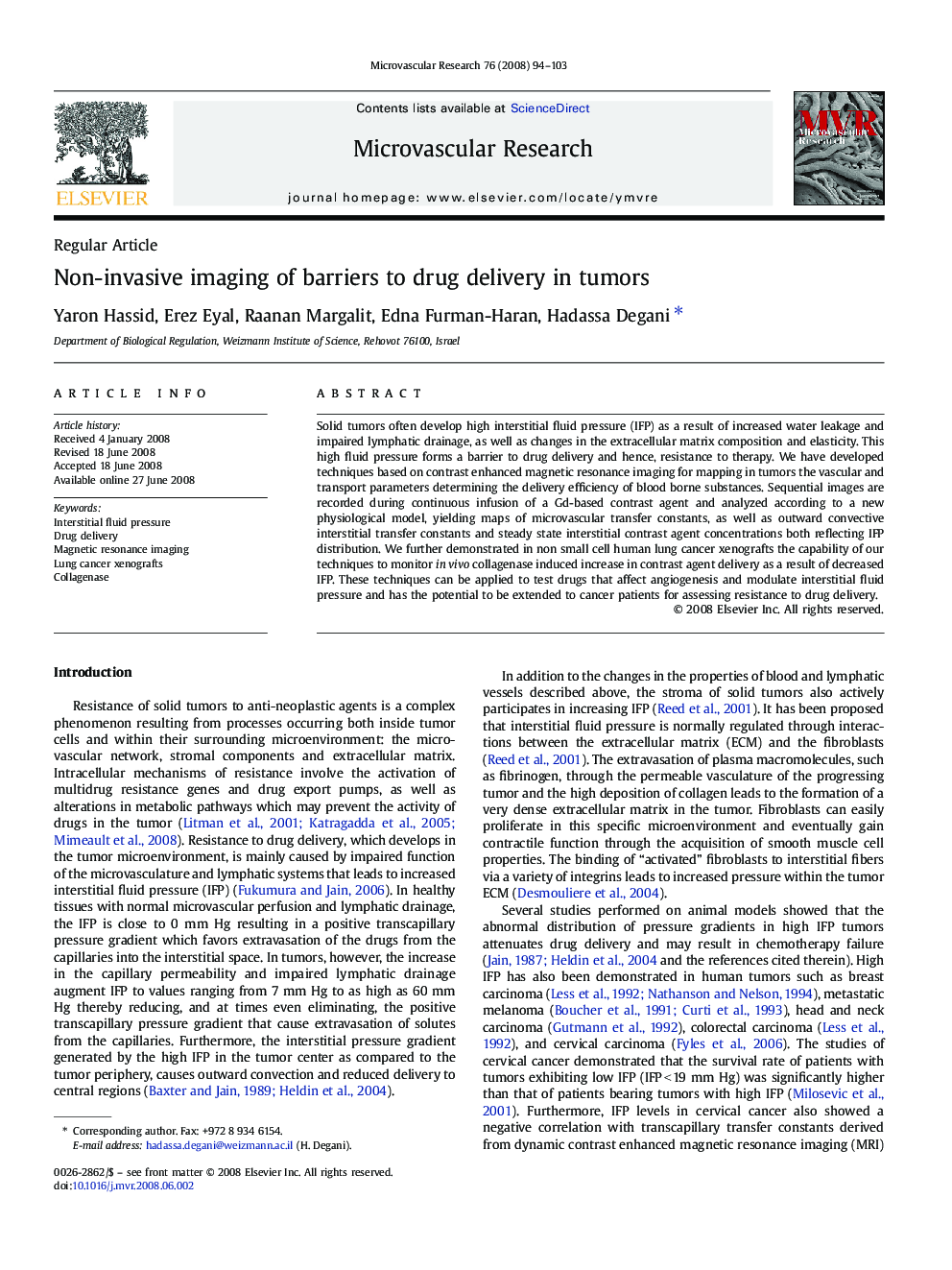| Article ID | Journal | Published Year | Pages | File Type |
|---|---|---|---|---|
| 1995486 | Microvascular Research | 2008 | 10 Pages |
Solid tumors often develop high interstitial fluid pressure (IFP) as a result of increased water leakage and impaired lymphatic drainage, as well as changes in the extracellular matrix composition and elasticity. This high fluid pressure forms a barrier to drug delivery and hence, resistance to therapy. We have developed techniques based on contrast enhanced magnetic resonance imaging for mapping in tumors the vascular and transport parameters determining the delivery efficiency of blood borne substances. Sequential images are recorded during continuous infusion of a Gd-based contrast agent and analyzed according to a new physiological model, yielding maps of microvascular transfer constants, as well as outward convective interstitial transfer constants and steady state interstitial contrast agent concentrations both reflecting IFP distribution. We further demonstrated in non small cell human lung cancer xenografts the capability of our techniques to monitor in vivo collagenase induced increase in contrast agent delivery as a result of decreased IFP. These techniques can be applied to test drugs that affect angiogenesis and modulate interstitial fluid pressure and has the potential to be extended to cancer patients for assessing resistance to drug delivery.
